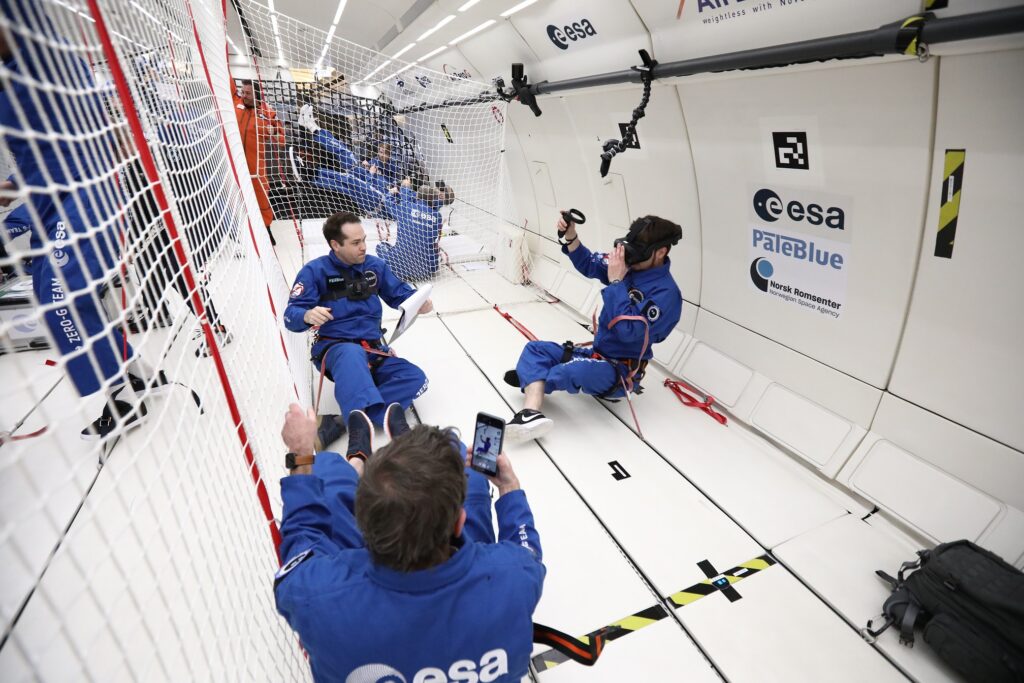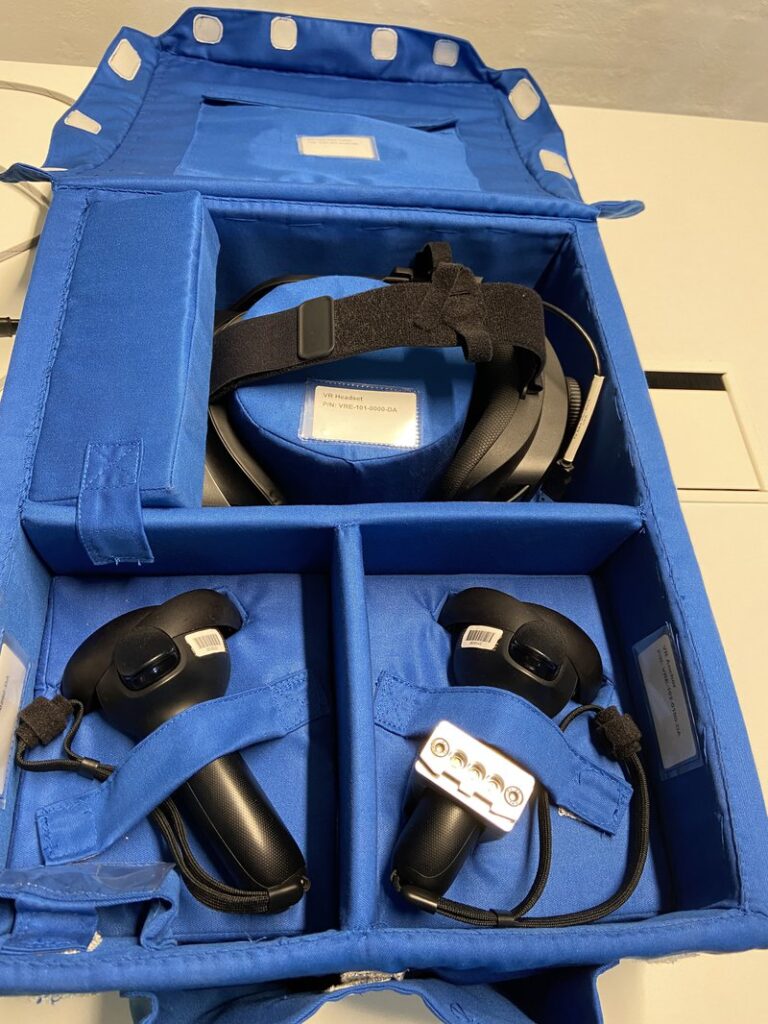Earlier this month, SpaceX launched their 29th commercial resupply mission and this had something special on board. HTC. in partnership with XRHealth and Nord-Space Aps, have sent the first virtual reality headset for mental health usage to the International Space Station (ISS) to support astronauts during their important European Space Agency (ESA) Huginn mission.
Two weeks ago, SpaceX CRS-29 for NASA sent a resupply mission to the International Space Station, and included in the 2,950kg cargo is a special VIVE Focus 3.
The headset is being used by ESA’s Danish astronaut Andreas Mogensen, Commander of Expedition 70 on the ISS, who will run a mental health initiative created by XRHealth and Nord-Space Aps.
While people often envision outer space as giving astronauts a sense of boundlessness and peace, the reality is never that straightforward. Astronauts are elite professionals, chosen for their skills and ability to handle a harsh and unforgiving environment, where every second counts.
Space is a relatively isolated and cramped environment, exacerbated by long missions. For months at a time astronauts live in a noisy, clinical set of rooms without ‘natural’ light where they are surrounded by the constant hum of machines, screens, and electronic devices. Privacy is limited, sleeping spaces are cramped, and meals can include freeze-dried food and recycled water. On top of this, it is a highly stressful environment, and the crew needs to be ready to act quickly if an alarm sounds, and every day is packed full of scheduled activities and experiments to maximize their time.
To help with this, Astronauts will enter VR experiences in the HTC VIVE by XRHealth, and Nord-Space aims to provide a mental balance. The main goal of the VR-based therapy is to give Huginn-mission astronauts a break from the isolating environment and allow them to be transported to another place.
Designing content and configuring a VR headset for microgravity posed complex challenges. Driven by HTC VIVE’s culture of innovation, the team found unique solutions that have an impact beyond Space travel.
VIVE Focus 3 Meets Microgravity
VR headsets in microgravity environments have been challenging in the past, with tracking and orientation a struggle. VR headsets on Earth rely on gravity vectors to align orientation, but those don’t exist in Space and the lack of gravity inherently creates a drift to the point where a VR headset is unstable. The microgravity environment paired with spacecraft mechanics causes constant jittering, rolling, and drifting of content which can lead to motion sickness and leave astronauts unable to read, see, or control the content in a headset.
HTC VIVE set out to solve these challenges with unique solutions, configuring the VIVE Focus 3 headset to the microgravity conditions of space. Inspired by a range of solutions in our industry-leading Location Based Software Suite (LBSS), our team developed a special tracking methodology which utilized a controller as an anchor point.
You can actually find this solution in arcades and businesses all over the world. On Earth we call it SimulatorVR mode, and it’s used for VR roller coasters and immersive motion simulators as well as comprehensive flight training and advanced driving simulations.
In SimulatorVR mode, a VIVE Focus 3 controller or VIVE Wrist Tracker is fixed to a set position and acts as an anchor, telling the headset where to base all it’s movement from. On the ISS, this replaces the missing gravitational field and allows for content to stay aligned and stable in microgravity.
In addition to tracking and alignment, maintaining power onboard presented another obstacle. As you’d expect, it’s vital to minimize risk on the ISS, and this includes batteries. In order to ensure the power source was consistent and capable, HTC VIVE conducted many tests before developing a way to use the ISS’s power source as the best fit for the mission.

VR Content for Mental Health
The VR therapy on the VIVE Focus 3 headset includes immersive 360° videos that act as powerful tools for achieving various clinical goals in mental health, particularly in the realms of relaxation and meditation.
ISS Commander Andreas Mogensen picked serene and captivating scenes himself from a selection. Andreas will dive with dolphins, watch a sunset over a mountain ridge, listen to birds singing, sit by the North Sea, and more:
- Sunset on the Hill: As you stand atop a picturesque hill, the sun gracefully descends below the horizon, casting a breathtaking canvas of warm orange and pink hues across the sky. The entire world below you bathes in the gentle, golden glow of the setting sun, creating a serene and captivating scene. Gazing upon this mesmerizing sunset, you can’t help but feel a profound sense of tranquility and wonder.
- Mountain Path in Europe: Journey along a rugged mountain path in the heart of Europe, where towering, jagged rocks surround you on all sides. Each step you take sends the soothing sound of crunching gravel echoing through the valley, harmonizing with the symphony of nature that fills the air. Inhale the crisp mountain air, filling your lungs as you absorb the awe-inspiring vistas that stretch out before you. The sheer beauty of these majestic mountains humbles you, reminding you of the vastness and grandeur of nature.
- Swimming with Dolphins: In this extraordinary underwater encounter, you are immersed in the world of dolphins, surrounded on all sides by these graceful creatures. They move effortlessly around you, their clicks and squeaks creating an enchanting symphony that resonates through the water. Feel the dolphins’ curiosity as they explore your presence, inviting you to share in their unique acoustic and vibrational universe.
- Western Sea: From a sandy dune in the western reaches of Denmark, take in the panoramic view of the landscape that unfolds before you. To one side, the expansive western sea (Vesterhavet) stretches out, its waves crashing against the shore. Turn your gaze to the other direction, and you’ll find yourself overlooking the moors of Jutland, where grassy fields sway in harmony with windmills twirling in the breeze. If there’s one thing missing to complete this Danish experience, it’s the taste of “Smørrebrød” and the briny scent of the western sea.
- Wetlands: Step onto a winding path that meanders through the tranquil wetlands. Here, tall grasses sway gently in the breeze, creating a soothing melody as they rustle. The air is filled with the soothing sounds of flowing water and the calls of various bird species, creating a symphony of nature. As you walk, you’ll catch whiffs of wildflowers, their fragrant blooms adding to the sensory tapestry of the wetlands.
With each step, the soft earth beneath your feet provides a cushioned embrace, while the setting sun bathes the landscape in a warm, golden light. The tranquility and biodiversity of the wetlands create an enduring impression, leaving you with a profound sense of connection to the natural world.


VR on The Ground
While this is the first time a VIVE Focus 3 will be used in Space, it’s already being used on the ground by the ESA and NASA. Recently, VIVE Pro 2 and VIVE Trackers were used in the NASA astronaut training for some of the mission specialists currently on the ISS, including Andreas, at NASA’s Johnson Space Centre.
In preparation for the Huginn mission, Andreas used the VIVE Pro 2 to train for spacewalk emergencies. When astronauts perform a spacewalk, they go into their spacesuit, climb out the airlock and stay tethered to the Space Station with a cable.
The virtual experience on VIVE Pro 2 simulated astronauts being “thrown” off the Space Station and required them to use the ‘Simplified Aid For EVA Rescue’ (SAFER) system, a small jet-pack, to push them back to the Space Station. VIVE trackers allowed for accurate tracking of the astronaut’s hands and body as they went through training simulations, making them as accurate as possible.
If you missed the CRS-29 launch, then you can replay it here and to get more information on the mission, head to nasa.gov.
